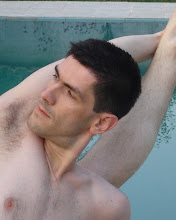
David Williams posted an open letter to his students on his website, www.ashtangayogi.com, sharing some of his thougt on the AShtanga Yoga practice. The letter is insightful and based on many years of David Williams´practice and teacher experience. I felt it needed to be shared. So here it goes:
Open Letter
Greetings and Salutations from Maui!
When I teach Yoga, I am always reminded that there are some major concepts about how Ashtanga Yoga is taught and practiced, based on my personal study, observation, and uninterrupted practice, that I feel are important to share with my classes.
First, and foremost, I hope you can learn from me that in your practice, "If it hurts, you are doing it wrong." Through the years, I have observed that too many people are hurting themselves and hurting others. Yoga practice can be (and should be) pleasant from the beginning to the end. What is important is the mulabandha and deep breathing. With daily practice, it is inevitable that one will become more flexible.
I have learned from my own practice and observation that pushing your current limitations to get into a position can result in injury, which results in one needing to rest the injury to recover so they can resume their practice. This entire sequence of events is not only unpleasant, it is contrary to my belief that through slow, steady daily practice, one can achieve greater flexibility by generating one's own internal heat to relax into positions, rather than being forced into a position. I have observed this slower, steadier method is not only healthier, but it allows one to develop greater flexibility of a more lasting nature, than the kind that is forced. Unfortunately, as many have found, pushing one's current limitations can result in having to severely curtail or limit activity during recovery. This cycle can lead to unpleasant associations with one's yoga practice, rather than the pleasant experiences I work to instill, and that I feel are necessary for a lifelong practice.
In my workshop, I want to show each of you how you can do the Ashtanga Yoga series in a lifelong practice that is a totally pleasant experience. I suspect that when you first saw the practice, you said to yourself, "If I did this, it would be great for me!" So, here you are--you have observed the practice, and you want to continue it. The key is being able to continue practicing Yoga for the rest of your life. From over 30 years of observing thousands of people practicing Yoga, I have realized that those who continue are the ones who are able to figure out how to make it enjoyable. They look forward to their daily practice and nothing can keep them from finding the time to do it. It becomes one of the most pleasant parts of their day. The others, consciously, subconsciously, or unconsciously, quit practicing. It is my goal to do everything I can to inspire you to establish your Yoga practice not just for the few days we are together, but for the rest of your life.
Secondly, I hope to share with you my belief that the ultimate goal of Yoga is not to increase flexibility and strength. Increased flexibility and strength are simply the natural results and benefits of daily practice. While additional flexibility and strength are important and apparent benefits of Yoga, I believe the goals of Yoga practice are self-realization and keeping oneself balanced and healthy on a daily basis. Health is your greatest wealth. The body's DNA knows how to heal itself; all it needs is the energy. The energizing, rejuvenating Yoga practices can be the source of this energy.
Lastly, I hope you will find that my workshop is for everyone at all levels. I am occasionally asked if someone is "good at Yoga." I quickly respond that the best Yogi is not the one who is most flexible, but the one who is most focused on what he or she is doing, the one most intensely doing the mulabandha and deep breathing. It is with some sadness that I have observed people "competing with their Yoga practice." I have also observed others who are discouraged in their practice because they feel this competition and worry that they will never be able to do their practice with the flexibility and skill of others more advanced in the series. My goal is to convey the idea that the greatest Yogi is the one who enjoys his or her Yoga practice the most, not the one who can achieve the ultimate pretzel position. It is my belief, and I hope to convey to you, that in your practice of this moving meditation, what is really important, is what is invisible to the observer, what is within each of you.
I believe in the Yoga. I believe that anyone who has the desire can do the Ashtanga practice, perhaps with personal modifications, in a way that is totally pleasant. For years, I have said, "If someone said to me, 'You have 15 minutes, one hour, etc., do something good for yourself. You can use barbells, bicycles, or whatever,' I would start doing the Ashtanga Yoga Salutations to the Sun and First Series." If someone can show me something better, I am ready to learn it. In my 30 years of searching, I have learned five or six systems of Yoga practice. For myself, I have not found a better physical, mental, and emotional fitness program than the Ashtanga Yoga system. I hope you will feel the same after our days together.
I look forward to sharing my practice and experience with you.
Yours in Yoga,
David Williams
